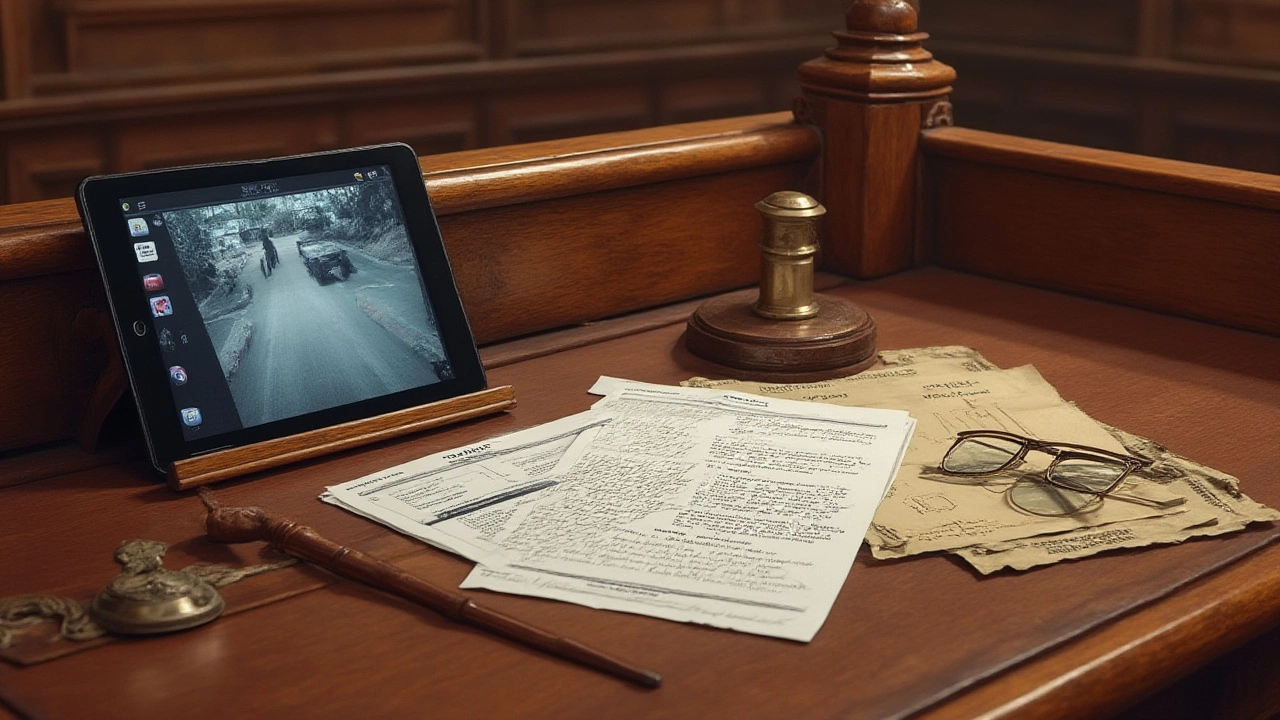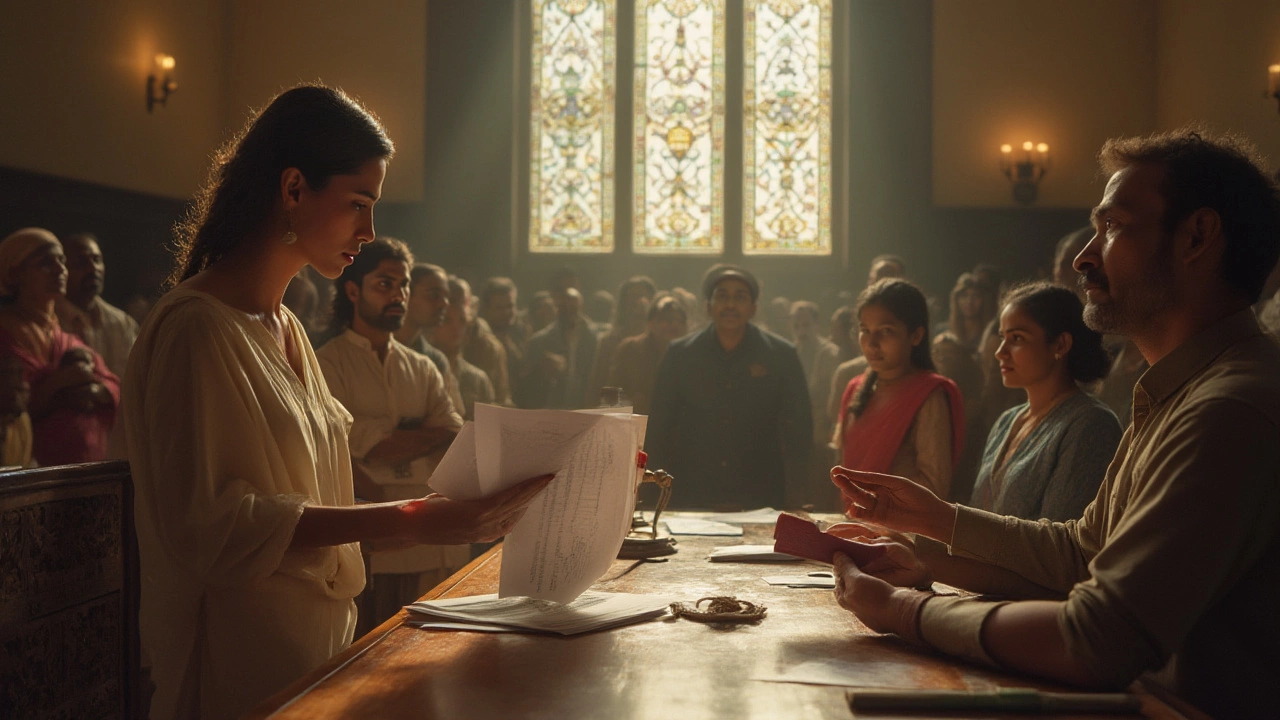Think getting the upper hand in a civil lawsuit is just about who tells the best story? That’s not how things shake out in real life. Every civil case comes down to one thing: proof. If you can’t back up your claims with solid, convincing evidence, it doesn’t matter how much you believe you’re right. The judge isn’t swayed by gut feelings or dramatic speeches—they care about what you can prove, and how well you do it. Civil cases aren’t about locking up villains, either. Instead, they usually revolve around private disputes about money, contracts, property, personal injury, or family matters. The stakes might not be jail, but they can impact someone’s life, reputation, and future.
The Burden of Proof: What Does It Really Mean?
The first big idea to get your head around in any civil case is the "burden of proof." Unlike criminal cases, where the bar is set incredibly high (beyond a reasonable doubt), civil lawsuits ask for something lighter: the preponderance of the evidence. This is just fancy lawyer-speak for "more likely than not." If you tip the scales even a tiny bit in your favor—say, 51% certainty—the law sees that as enough. That’s wild when you compare it to how criminal courts work, right?
In practical terms, whoever brings the case (the plaintiff) usually has to show their version of events is probably true. Let’s say you’re suing your neighbor because their dog trashed your garden. You don’t have to prove it with a video from every angle—you just need the judge to believe it’s more likely than not that the canine culprit lives at their address and did the damage. If you’re the one being sued (the defendant), sometimes the proof burden shifts if you make certain claims (“Yes, but he told me I could plant sunflowers…”). But in most situations, the plaintiff does most of the lifting.
Here’s a quick way to visualize it:
| Type of Case | Burden of Proof Standard | What It Really Means |
|---|---|---|
| Criminal | Beyond a reasonable doubt | Almost absolute certainty |
| Civil | Preponderance of evidence | Just over 50% certainty |
| Some Civil (fraud cases, etc.) | Clear and convincing evidence | About 75% certainty |
There are certain civil cases, like fraud, where the court wants something stronger—clear and convincing evidence. It isn’t “beyond a reasonable doubt,” but it means you can’t just scrape by with the thinnest thread of proof. Judges want to see a clear and strong story, backed by convincing facts.
Here’s one more tip for you: if you ever find yourself confused about who really has to prove what, look up the actual law (called the “elements”) for your type of case. For a contract fight, what terms are in dispute? For a car accident, who had the right of way? The party pushing the claim needs to prove every essential element, and if they miss one, they can lose. That’s why smart lawyers break everything down into checklists.

Building and Presenting Evidence
Evidence is the real heavyweight in a civil lawsuit. This isn't just about dramatic courtroom scenes or “Objection!” moments. It’s methodical and matters a lot more than people think. Evidence in civil court comes in lots of flavors—documents, witness testimony, photos, texts, emails, receipts, even physical objects. If you can get your hands on it (legally), and it helps tell your side of the story, you’ll want to use it.
Let’s look at the main types:
- Documentary Evidence: Contracts, rental agreements, insurance policies, bank statements, invoices. These are reliable because—unlike people—they don’t forget or get nervous on the stand. A printed-out text confirming a deal can sway a case as much as a person’s spoken words.
- Witness Testimony: People who saw, heard, or experienced something firsthand are useful. Sometimes, experts like doctors or accountants weigh in if the dispute involves things outside the average person’s knowledge. Courts tend to trust neutral witnesses more than family or friends (obvious bias alert).
- Physical Evidence: Damaged property, torn clothing, broken parts—anything you can literally show. In a car accident case, a smashed headlight with blue paint from the other car can be gold.
- Digital Evidence: Emails, GPS logs, social media posts. If it lives on a server or hard drive and speaks to what happened, it counts. More courts are relaxing about this kind of proof, as long as you show it hasn’t been altered.
You can’t just hand in evidence and expect the judge to gratefully accept it, though. There are rules. Evidence needs to be relevant, which means it actually relates to the case at hand. And it must be admissible—which means you need to prove it's authentic and reliable, not just hearsay or made up. Ever heard of the “best evidence rule?” If you want to prove a contract existed, you should bring the original document or an exact copy, not just your retelling.
Gathering your proof ASAP matters way more than you think. Ever had a text message disappear, or found an important photo missing months later? The longer you wait, the harder it gets. People’s memories blur, evidence gets lost, and stories change shape. That’s why, in real court battles, parties often send formal letters (called “preservation notices”) telling each other: don’t touch or delete anything!
Getting evidence is sometimes a fight itself. In bigger cases, there’s a phase called “discovery” where each side requests information from the other side. This can involve written questions (interrogatories), requests for documents, or even forcing someone to answer questions in person (a deposition). Law firms set up “war rooms” filled with labeled folders and digital files. Why? Because a missing receipt or overlooked email can swing a verdict.
If your case hinges on expert evidence—say, proving a medical mistake—you’ll need to find credible professionals who can explain things in plain English. Judges roll their eyes at experts who talk in circles or obviously favor whoever’s paying them. The more impartial and experienced the expert, the more likely the court will listen.
The best tip here? Document everything! Even little things: take photos, write down dates, save emails. If you have a feeling something might turn into a fight later, gather that proof early. In court, “it never happened” carries weight against “here’s a time-stamped photo.”
Something a lot of people don’t realize: you can lose a civil case even if you’re mostly right, just because you didn’t line up your evidence well. It isn’t so much about what’s true, but about what you can prove.

Making Your Case: Strategies That Work
Let’s talk tricks of the trade. If you want to win a civil case, you need more than just “the truth.” Organization and strategy can mean the difference between walking out happy or shaking your head in disbelief.
First, understand exactly what you have to prove. Look up the “elements” of your case—these are like ingredients in a recipe. Leave one out, and you won’t get the ruling you want. Print these elements and tack them on your wall if you have to. For example, a negligence case usually needs you to show: (a) someone owed a duty, (b) they broke it, (c) you were harmed, and (d) their action caused the harm. Each has to be supported with real evidence.
Great litigators recommend you map your evidence to each element. Run through a checklist: do I have a piece of proof for every part? Where are my holes? Plug them before it’s too late. Sometimes you realize you’re missing something vital—like, you forgot to get a repair bill or a witness’s statement. Better to know early than on the day in court.
Good cases usually tell a simple, believable story. Avoid drama or exaggeration. Judges have heard it all before. What they want is a clear, logical explanation, backed up by proof at every step. If you’re too vague—“I think it was around March, or maybe April…”—you sound unreliable. Aim for specifics: “On March 3rd, I sent an email confirming delivery. Here’s the screenshot.”
If you have multiple pieces of evidence telling the same story—say, a contract, three emails, and a witness all pointing to one fact—that’s big. It’s called “corroboration,” and it makes your version much harder to shake. But don’t bury your key proof under a mountain of distractions. Judges groan when handed boxes of paperwork that all say the same thing. Quality beats quantity, every time.
Another sneaky but effective move? Anticipate the other side’s arguments. You can be sure they’ll show up with their own story. If you can pre-emptively explain away their best counterpoints, you get taken more seriously. Example: “The defendant might claim I never called their repair team, but here’s a phone bill from that day showing a ten-minute call.”
One practical tip most people miss: always treat court staff, opposing parties, and witnesses with respect. Judges notice how you behave. If you seem reasonable, organized, and calm, you become more believable. If you’re rude or lose your temper, you risk looking unreliable—even if the facts should be on your side.
At the end of the day, civil cases turn on what you can show, not what you feel. Yes, luck can play a part—a witness goes missing, the other side has deeper pockets, weird technicalities pop up. But most of the time, for regular folks, solid preparation and credible proof set you up best for a win. Ask anyone who’s been through one: the “I wish I’d saved that text” regret is real. So get ahead of it. Think like a detective, keep your paper trail tidy, and remember that judges decide based on the evidence—not just what they see on TV.
